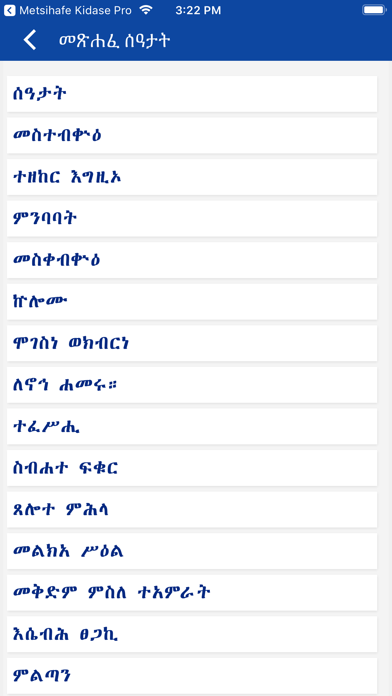
Se’atat, the Horologium
The Horologium was composed by distinguished 15th century scholar, Abba Giyorgis of Gascha; during the ensuing it was gradually enriched by additional hymns and prayers. In big churches it is usual for monks, priests and deacons to conduct the Se’atat in the northern part of the ambulatory, while the Debteras are conducting a different service.
The book of Se’atat contains the great public prayers of the Church, not necessarily said in public but always offered in the name of the church. It is recited at stated hours in churches, monasteries and outside. It is divided into seven parts known as canonical hours and each part is recited at its own hour. These hours are known as Night, Prime, Terce, Sext, None, Vespers, and compline. To be more exact the first of the canonical hours is night or matins (morning office) which is followed by lauds or praises of God. These are reckoned as one “hour”. The next division is prime or first because it is said at “first hour” or sun rise. Then terce or third, recited at the third hour. Sext or sixth at noon; none or ninth at three O’clock; Vespers is next, signifying evening services, and then comes compline or the completion.
The office contains psalms, discourses by the great fathers of the church, hymns and prayers. This office is an abundant treasure of grace. Deacons stand for the “gibre leilit” or night service and chant the “Se’atat” or Book of hours, serving till dawn. There was an arrangement under which a debtera held some church land and was bound in return to recite the Se’atat or Hours of the night at certain times, or held land for which he was bound to recite the “Hours of the Day” in the church. But the recital of the office is not obligatorily imposed on priests and deacons.
Features of the App
Theme
• Material Design color schemes.
• Setting for Night mode and Day Mode
Multiple book collections
• Add two or more translations to the app.
• Multiple books of Ethiopian prayers
Navigation
• User can configure the choice of translation and layout within the app.
• Allow swiping between books
• Book names could be displayed as list or grid views
Fonts and Font Sizes
• You can change fonts sizes from toolbar or navigation menu.
• The app uses true type fonts for main view.
Text Copy and Share
• To copy a text to the device clipboard, tap on the text to select it. Then select the Copy button from the text selection toolbar.
• To share a text with someone else, tap on text to select it. You can choose to share by text message, email, WhatsApp, etc.
Contents
• Book contents are rearranged and missing parts included
• Colorful texts for the name of God, Jesus, St. Mary and Saints
• Notices and Orders in the book are written in italic for emphasis
Interface translations
• Added interface translations in English, Amharic and Afaan Oromoo.
• Changing the app Interface language will change menu item’s name.
Audio and Text Synchronization (future pro update)
• The phrases being read are highlighted and synchronized with the audio being heard.
• Added new user setting ‘Highlight synchronized phrases’ to allow user to turn on/off the yellow highlighting when the audio is playing.
Search
• Powerful and fast search features
• Search the whole words and accents
• Number of search results displayed at the bottom of the page
Settings screen
• Allow the user of the app to configure the following settings:
• Book selection type: list or grid
• Red Letters: show the name of saints in red



